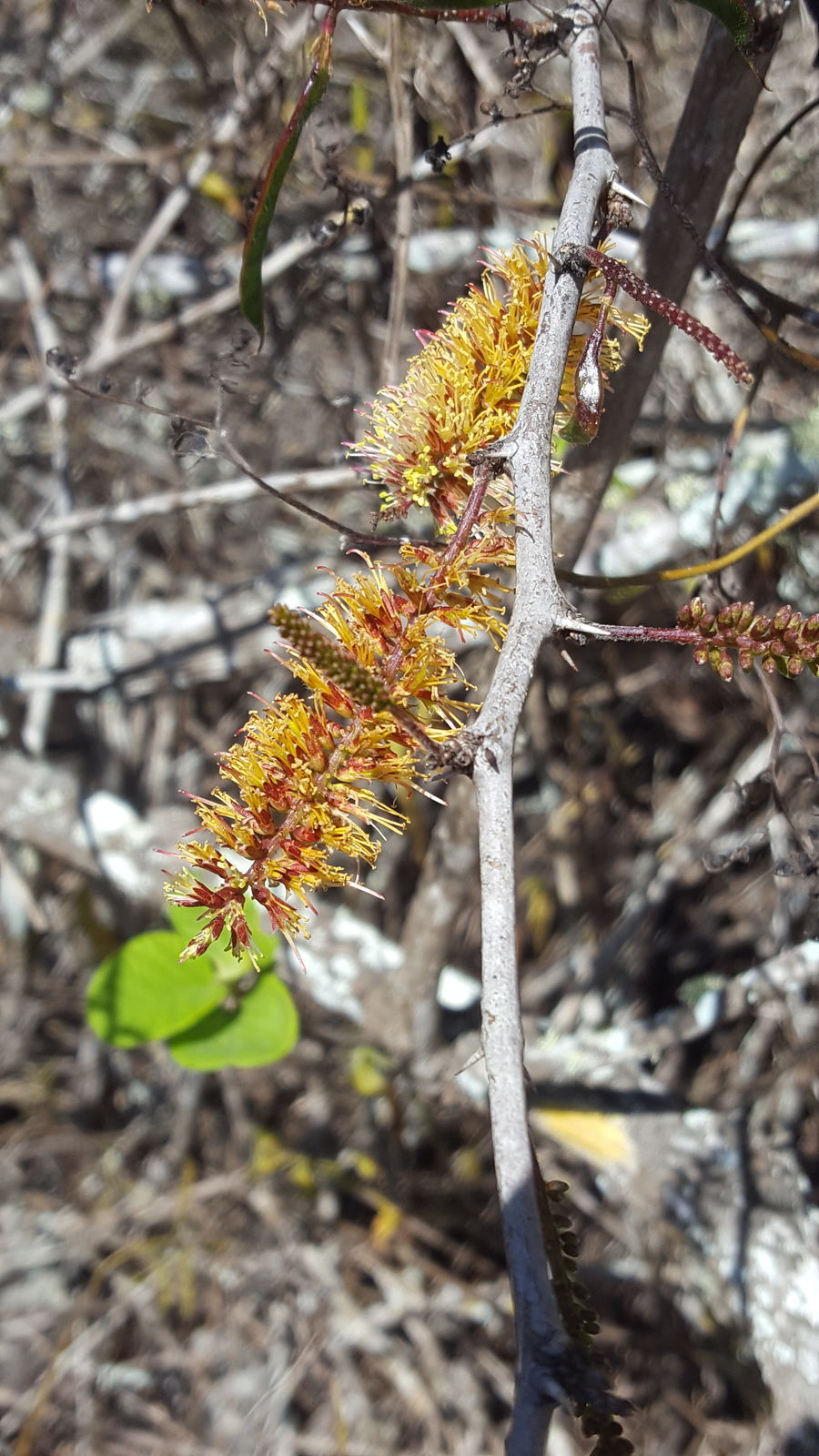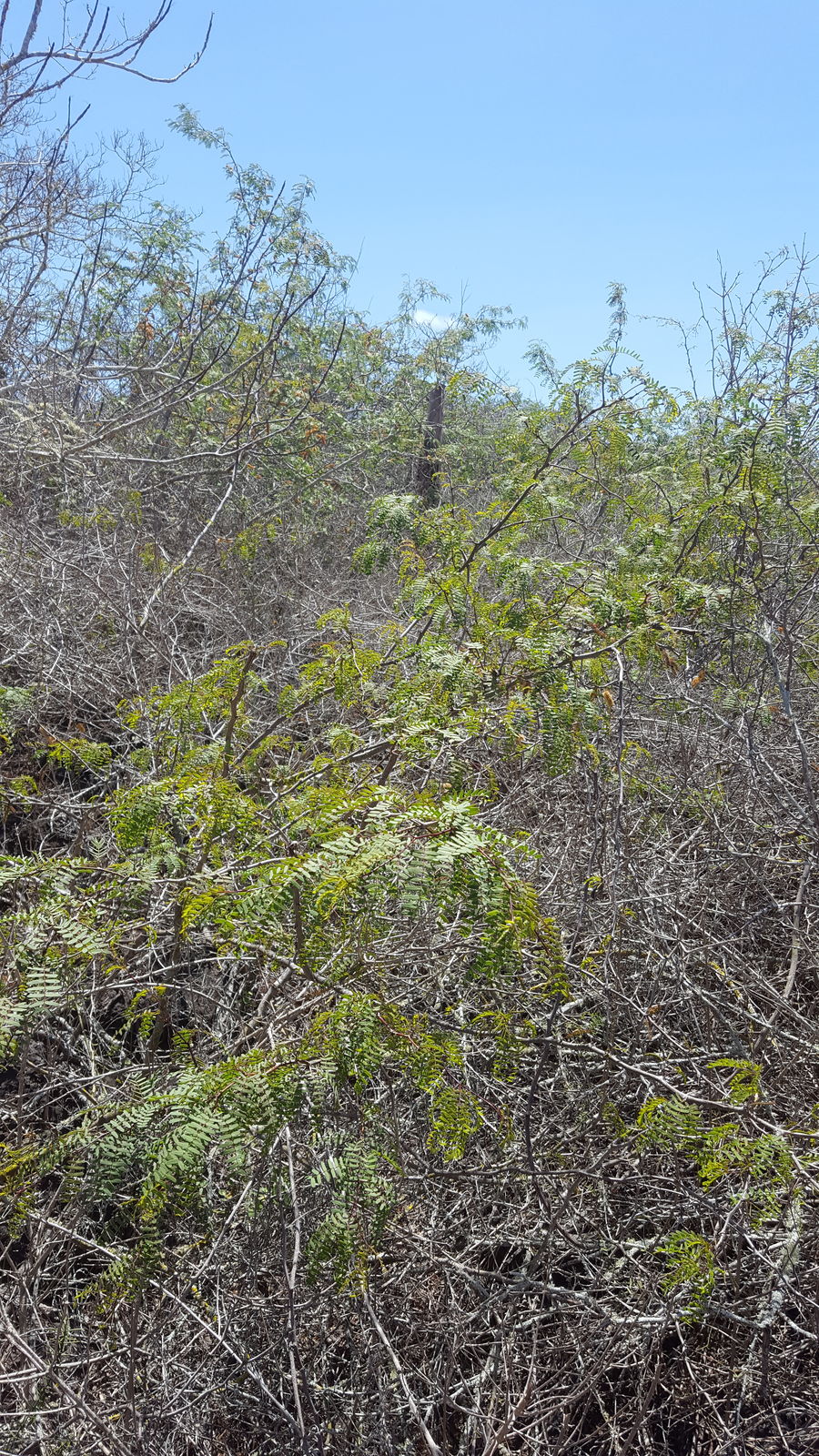Koa Haole
prosopis pallida
Also known as: ["Honey Mesquite","Algarrobo"]
Overview
A drought-tolerant tree native to arid regions, known for its hardy nature and ability to thrive in harsh conditions.
Benefits & Perks
["drought tolerant","wildlife attractant (bees, butterflies, birds)","shade tolerant"]
Botanical Classification
| Phylum: | Magnoliophyta |
| Class: | Magnoliopsida |
| Order: | Fabales |
| Family: | Fabaceae |
| Genus: | Prosopis |
| Botanical Name: | Prosopis pallida |
Plant Characteristics
Basic Information
- Category: Trees
- Suitable Location: arid or semi-arid regions, xeriscaped gardens
- Suitable For:
- Is Weed: No
- Allergenicity: low
Environmental Needs
- Climate: {"temperatureRange":"5–45°C"}
- Hardiness: {"zones":"8–11"}
- Misting: rarely required
- Drainage: Fast-draining to prevent root rot.
- Soil Type: Well-draining, sandy or loamy soil with some organic matter. Cactus or succulent mix is ideal.
Maintenance Level
- Maintenance Level: low
- Toughness Level: high
- Pruning Frequency: Annually in late winter or early spring before new growth begins.
- Pruning Intensity: Light to moderate. Remove only dead, damaged, or overly dense branches.
Care Details
Ideal Sunlight Coverage:
Full sun (6–8 hours of direct sunlight daily). Tolerates intense heat and bright conditions year-round.
Sunlight Tolerance Tips:
Acclimate new plants gradually to full sun to prevent scorching. Place in the brightest possible location indoors if grown as a houseplant; outdoors, ensure unobstructed sunlight.
Care Requirements
Care Difficulty
moderatemoderate
Sunlight
full sun
Use shade cloth if temperatures exceed 100°F to prevent leaf burn; rotate plant weekly for even growth.
Watering
every 2–3 weeks during dry periods, less frequently in winter
Water thoroughly until runoff, allow soil to dry between waterings, and avoid frequent shallow watering.
Soil
well-drained, sandy or loamy soil
pH: Slightly acidic to neutral (pH 6.0–7.5).
Ensure pots have drainage holes; avoid heavy clay soils; top-dress with compost annually.
Temperature
Thrives in hot climates, ideal range 70–100°F (21–38°C). Tolerates brief frosts down to 20°F (-6°C) but prefers warmth.
Protect from frost; ensure good air circulation in heat; adjust watering with temperature changes.
Fertilizing
rarely required, annually with slow-release fertilizer if needed
Fertilize only during active growth; avoid over-fertilizing, which can harm this drought-tolerant species; flush soil occasionally to prevent salt buildup.
Propagation
Methods
Stem cuttings or seed. Stem cuttings root more reliably for home growers.
Step-by-Step Propagation Guide
- Take 4–6 inch cuttings.
- Remove lower leaves.
- Dip in rooting hormone.
- Plant in medium.
- Keep moist and warm until roots form.
Best Time: Spring or early summer when the plant is actively growing.
Environment
Warm (75–85°F), humid environment with bright indirect light and good air circulation.
Medium
Well-draining mix of perlite and coarse sand or cactus potting mix.
Hormone
Recommended to use rooting hormone for faster and more reliable rooting.
Timeline
Stem cuttings may root in 4–8 weeks; seed germination can take 2–4 weeks with pre-soaking.
Tools Needed
Pruning shears, rooting hormone, small pots, well-draining medium, misting bottle.
Quick Tips
Use fresh, healthy cuttings; maintain consistent moisture; provide bottom heat if possible for faster rooting.
Pruning & Repotting
Pruning Guide
Method
Selective pruning to open up the canopy and remove crossing branches. Avoid heavy shaping unless necessary.
Pruning Plan
Prune to maintain shape, remove dead/diseased wood, and encourage airflow. Minimal pruning is needed for this naturally robust species.
Tools
Pruning shears, loppers, gloves, disinfectant for tools.
Checklist
Disinfect tools; prune during dormancy; remove dead/diseased wood first; make clean cuts just above buds or branches.
Repotting Guide
Best Season
Early spring before active growth begins.
Pot Size
Increase pot size by 2–3 inches in diameter.
Method
Remove plant gently; trim any circling roots; place in a slightly larger pot with fresh, well-draining soil; water thoroughly after repotting.
Suggestions
Repot only when root-bound or every 2–3 years, as this species prefers being slightly root-bound.
Checklist
Choose appropriate pot size; use well-draining soil; trim roots if necessary; water after repotting; avoid fertilizing for a month.
Advanced Care Tips
Watering Mastery
Watering Checklist
Check soil moisture before watering; water deeply; ensure drainage; adjust frequency seasonally.
How to Apply Water Properly
Water directly at the root zone, ensuring even saturation to a depth of 6–8 inches. Ensure excess water drains away to prevent root rot. Water early in the morning to minimize evaporation.
Watering Schedule Tips
Water deeply once every 7–10 days during active growth in spring and summer; reduce frequency to every 3–4 weeks in fall and winter. Adjust based on rainfall and soil moisture retention.
Soil Improvement
Add perlite, coarse sand, or gravel to improve drainage; incorporate compost for organic matter in sandy soils.
Temperature Stress Management
Signs of Temperature Issues
Chlorosis or leaf drop in extreme cold; wilting or leaf scorch in excessive heat.
Cold Stress
Growth slows or halts; may experience leaf drop or dieback in prolonged cold or frost.
Solution: Provide frost protection (e.g., burlap wrap, mulch) in cold climates; move potted plants indoors during freezes.
Hot Stress
Leaves may wilt, curl, or drop; growth may slow under extreme heat and drought.
Solution: Increase watering frequency; provide partial shade during peak heat; use mulch to retain soil moisture.
Fertilizing Guide
Fertilizing Checklist
Use balanced fertilizer; apply in spring/summer only; follow dilution instructions; avoid winter feeding.
Fertilizing Method
Use a balanced, slow-release fertilizer in spring; dilute liquid fertilizer to half-strength monthly during growing season. Avoid fertilizing in winter.
Common Problems & Solutions
Toxicity Warning
Cats
ToxicCats are susceptible to toxicity from Prosopis pallida, particularly from its seeds and pods. Ingestion can result in severe gastrointestinal upset and other systemic effects.
⚠️ Symptoms:
🌿 Toxic Parts:
⚡ Toxic If:
if eaten
Dogs
ToxicIngestion of Prosopis pallida seeds and pods by dogs can lead to gastrointestinal distress and systemic toxicity. The plant's compounds may cause adverse reactions requiring veterinary attention.
⚠️ Symptoms:
🌿 Toxic Parts:
⚡ Toxic If:
if eaten
Humans
ToxicProsopis pallida contains toxic compounds, primarily in its seeds and pods, which can cause significant physiological disturbances upon ingestion. These compounds may interfere with metabolic processes and lead to severe health issues.
⚠️ Symptoms:
🌿 Toxic Parts:
⚡ Toxic If:
if eaten
Frequently Asked Questions
Q: Is Prosopis pallida toxic to pets?
A: It is mildly toxic to dogs and cats.
Q: How does Prosopis pallida adapt to drought?
A: It has deep root systems and succulent leaves to conserve water.
Q: Does Prosopis pallida attract wildlife?
A: Yes, it attracts bees, butterflies, and birds due to its nectar-rich flowers.
Quick Reference
| Family: | Fabaceae |
| Care: | moderate |
| Light: | full sun |
| Water: | every 2–3 weeks during dry p |
Get Expert Care Tips
Download the Plantious app for personalized care reminders and plant identification!
Google Play App Store








